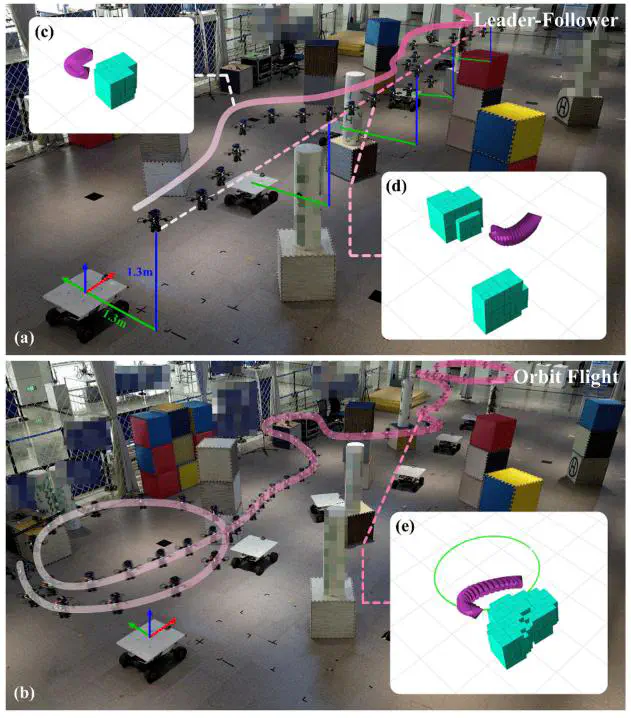 Image credit: FAST-FIRE
Image credit: FAST-FIREAbstract
CoNi-MPC [Zhang et al. (2023)] provides an efficient framework for UAV control in air-ground cooperative tasks by relying exclusively on relative states, eliminating the need for global state estimation. However, its lack of environmental information poses significant challenges for obstacle avoidance. To address this issue, we propose a novel obstacle avoidance algorithm, Cooperative Non-inertial frame-based Obstacle Avoidance (CoNi-OA), designed explicitly for UAV-UGV cooperative scenarios without reliance on global state estimation or obstacle prediction. CoNi-OA uniquely utilizes a single frame of raw LiDAR data from the UAV to generate a modulation matrix, which directly adjusts the quadrotor’s velocity to achieve obstacle avoidance. This modulation-based method enables real-time generation of collision-free trajectories within the UGV’s non-inertial frame, significantly reducing computational demands (less than 5 ms per iteration) while maintaining safety in dynamic and unpredictable environments. The key contributions of this work include: 1) a modulation-based obstacle avoidance algorithm specifically tailored for UAV-UGV cooperation in non-inertial frames without global states; 2) rapid, real-time trajectory generation based solely on single-frame LiDAR data, removing the need for obstacle modeling or prediction; and 3) adaptability to both static and dynamic environments, thus extending applicability to featureless or unknown scenarios.